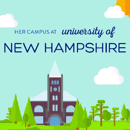Chances are, you have heard someone refer to themselves or someone else as either left or right-brained. This idea suggests that one part of the brain is more dominant. Those with a dominant left hemisphere are thought to be strong analytical thinkers who, through the use of logic and reasoning are usually adept in the maths and sciences. Their right-brained counterparts are thought to be creative and imaginative – the artists of the world, if you will. The left vs. right-brain dominance theory, however, has been recently proven to be flawed as scientists continue to uncover the deeply interdependent nature of both left and right hemispheres in brain function. The left and right hemispheres must operate in accordance with one another to complete any task, be it reading a book or going for a jog. This black and white sentiment of logic vs. creativity has come to be echoed in the way many of us view learning and education.
In the last two decades, the Western education system has seen a major push toward developing a generation with a broad knowledge of STEM subjects. The acronym STEM represents four major disciplines – science, technology, engineering, and math. The curriculum of a STEM-rich education aims to seamlessly blend these subjects together in order to teach students skills for a modern world, helping shape them into the workforce of the future.
While there is certainly no denying that math and science are vital skills for future generations to hone, some are worried that too much time is being spent on STEM subjects while other meaningful subject areas are ignored entirely. Controversy arose when government initiatives in schools placed a disproportionate focus on STEM subjects, often leaving programs focused on the arts susceptible to budget cuts or total elimination. This issue begs the question: if certain subjects are deemed less valuable than others and entire subjects are being uprooted from our children’s curriculum, are they truly getting a well-rounded education?
Given the highly competitive world we live in, it is imperative that an education be comprehensive and well-rounded. As teachers and parents noted the disparity in importance placed on different subjects, the STEM movement evolved into the STEAM movement, which now includes the liberal arts, language arts, and the fine and performing arts. The STEAM movement aims to integrate the arts into education by taking an interdisciplinary approach to learning and teaching. The benefits of a STEAM approach, however, are far greater than just adding a few more classics to the reading list. Studying the arts can actually help you become a better scientist. The arts promote creativity, ingenuity, and communication, all of which are vital elements in the learning and mastery of STEM subjects.
Much like the outdated left vs. right-brain dominance theory, the two areas of focus, being STEM and the arts, have long been considered mutually exclusive. It is only by marrying the key values of the arts and the sciences – creativity, free-thinking, and ingenuity, that education can truly be considered well-rounded.



